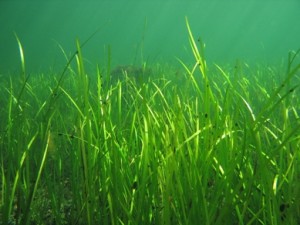 Whenever I collect seaweed for my artwork, I always adhere to sustainable harvesting practices which limit the amount and kind of seaweed I am allowed to take. Seagrasses are often off limits because they are a vital part of our ecosystem, providing homes and food for many marine animals and sea birds. Seagrasses are unfortunately turning up on many endangered lists.
Whenever I collect seaweed for my artwork, I always adhere to sustainable harvesting practices which limit the amount and kind of seaweed I am allowed to take. Seagrasses are often off limits because they are a vital part of our ecosystem, providing homes and food for many marine animals and sea birds. Seagrasses are unfortunately turning up on many endangered lists.
A recent report by an international team of researchers completed the first ever review of the world’s seagrass species, classifying the risk of extinction for each respective species under the International Union for the Conservation of Nature (IUCN) Red List of Threatened Species. Twenty one seagrass experts reviewed 72 different varieties and species of seagrass and found that one in five seagrass species is now threatened (endangered or vulnerable) or near threatened.
Human impact, such as shoreline construction, land reclamation and other coastal activities are the biggest threat to seagrass survival. Declines in water quality and clarity from nutrient and sediment loading are also major factors.
The creation of marine protected areas and the removal of threats facing seagrasses are the greatest hope in protecting them and insuring their survival.
Please visit SeaWeb’s Science in the Spotlight to learn more about endangered seagrasses and what you can do to help avert this urgent problem.





